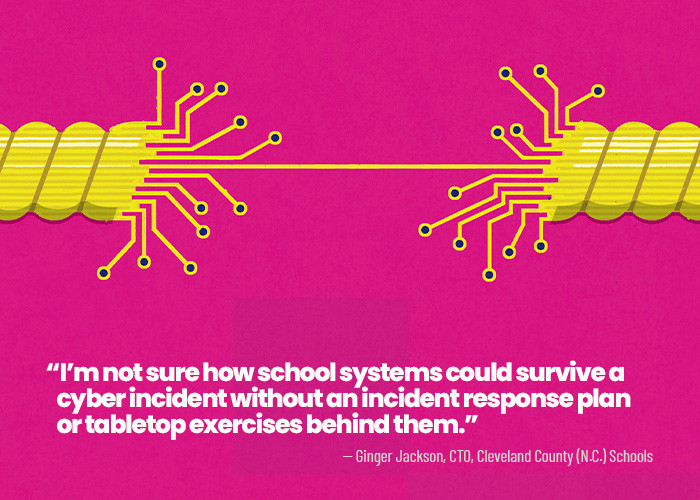Unlock Exclusive Cybersecurity Insights
Complete the form below to be redirected to CDW's exclusive proprietary research report on Cybersecurity. Once the form is submitted, you’ll be opted into our Security email stream.
Incident Response Plans Should Also Include Steps for Restoration
The IR plan should also include a remediation pathway for getting the district’s network back up and running. The plan should incorporate a list of assets and a system map that shows how systems are connected to each other, including the library services, special education, food services, school bus routing and student information systems, Richardson advises.
Then, the IR plan should outline how to restore these services and rebuild the technology infrastructure after an incident. It should also describe what services must be in place before restoring from backups, Richardson says.
Although a school district’s IT staff may have an idea of what incident response should entail, IR plans are often not documented, Boell explains.
“Being able to put it down on paper helps to streamline that process and make sure that the split-second decisions being made are in the best interest of the district,” he says.
DIG DEEPER: Schools turn to outside experts to improve their cybersecurity posture.
How an IR Plan Supports Learning Continuity in K–12
Although students might be able to return to Hillsboro-Deering Schools the next day after a blizzard, that might not be possible after a cyberattack, Richardson says. According to Comparitech, ransomware attacks in the education sector over the past five years resulted in unwanted downtime that “varied from a couple of hours to 36 days.” In these cases, learning was not the only thing that was affected.
This is why Ginger Jackson, CTO of Cleveland County Schools in Shelby, N.C., says K–12 school districts must also plan for business continuity. She points to employee payroll as an example. During a cybersecurity incident, schools may need a contingency plan for cutting paper checks, she says.
Superintendents should then meet with other leaders of departments, such as food services, to map out a backup plan in the event that a cyber incident disrupts the power or heating system.
Get Outside Help in Building a K–12 IR Plan
Rather than carrying out an IR plan on their own, districts should look to service providers that offer hosted solutions to help them recover. When schools maintain a solid relationship with a vendor, they can replace equipment such as servers and laptops at scale, Richardson says.
Vendors can also help schools manage their IR process. When Los Angeles Unified School District shared its ransomware recovery story at CoSN earlier this year, district leaders mentioned how valuable it would have been for them to have an IR retainer to support them through the process.
Although schools likely won’t factor every situation into their IR plan, a solid checklist can help them maintain learning continuity.
“If you can get a couple of broad scenario checklists, you can apply them to the specific scenario as it develops,” Richardson says.










